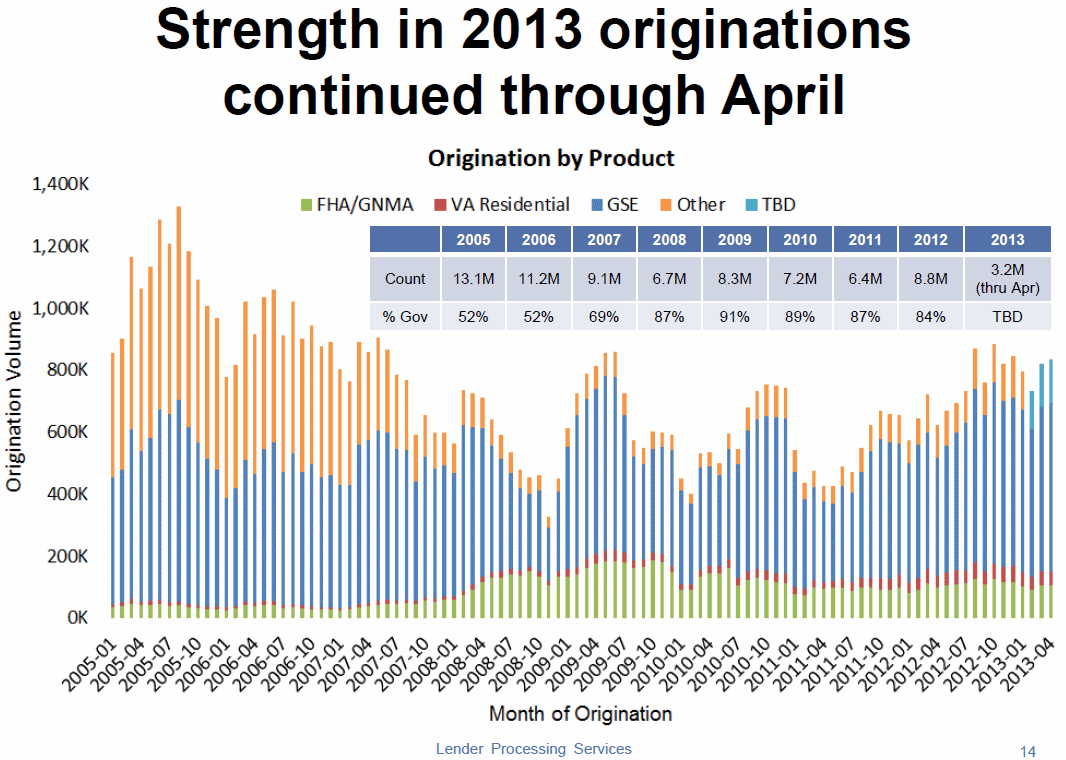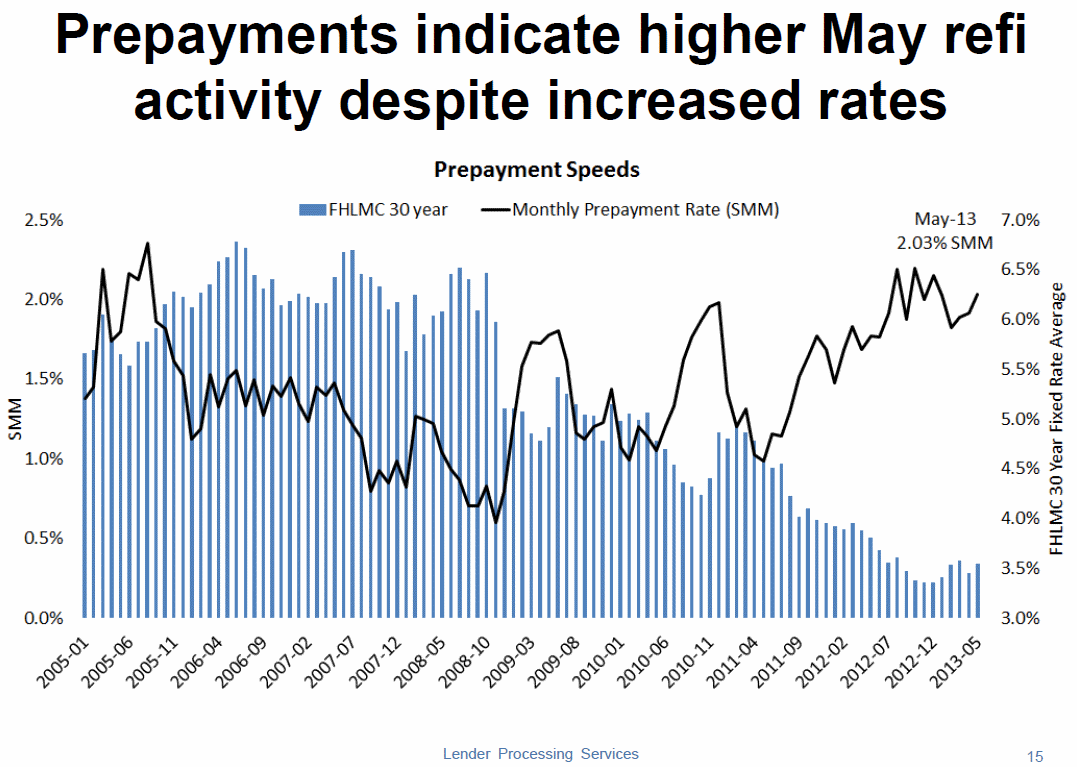Mortgage delinquencies in May posted the largest year-to-date drop seen since 2002 Lender Processing Services (LPS) said today. Delinquencies were down 15 percent from the end of December 2012 to a May rate of 6.08 percent. This was a drop of 2.11 percent from April. LPS Applied Analytics Senior Vice President Herb Blecher said that much of this improvement is supported by the fact that new problem loan rates are approaching the pre-crisis average.
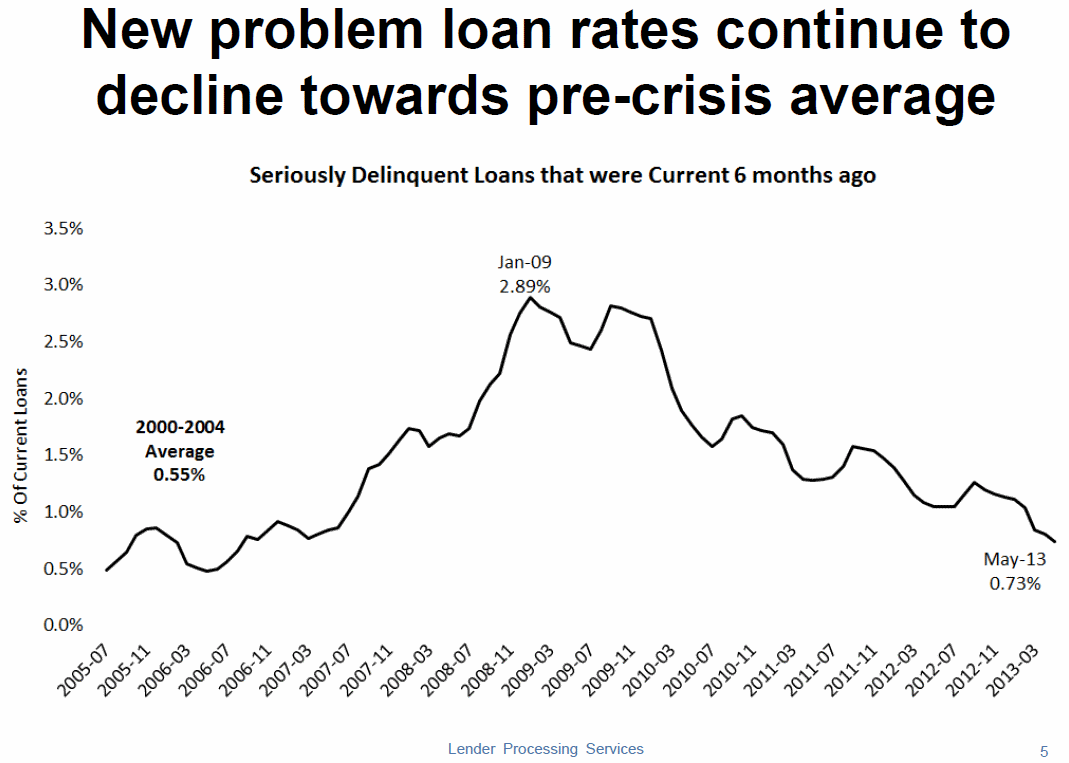
Blecher said, "Though they are still approximately 1.4 times what they were, on average, during the 1995 to 2005 period, delinquencies have come down significantly from their January 2010 peak. In large part, this is due to the continuing decline in new problem loans -- as fewer problem loans are coming into the system, the existing inventories are working their way through the pipeline. New problem loan rates are now at just 0.73 percent, which is right about on par with the annual averages during 2005 and 2006, and extremely close to the 0.55 percent average for the 2000-2004 period preceding."
The LPS Mortgage Monitor for May noted that the current delinquency rate is more than 4 percentage points below the peak of the mortgage crisis in January 2010 and delinquencies of prime mortgages are down nearly 50 percent from that point in time. The total pre-sale inventory rate (homes in some stage of foreclosure) also continued to decline, down 3.91 percent from April to 3.05 percent. There were 116,812 foreclosure starts during the month compared to 127,496 in April and the lowest number in at least the last 12 months.
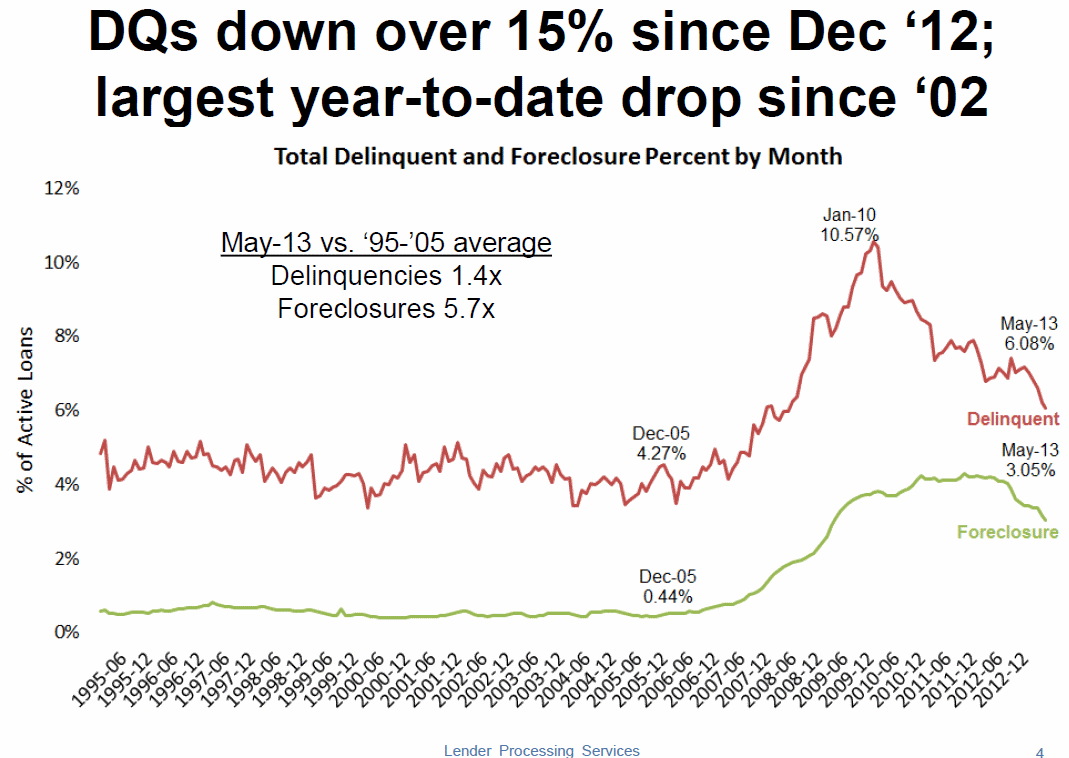
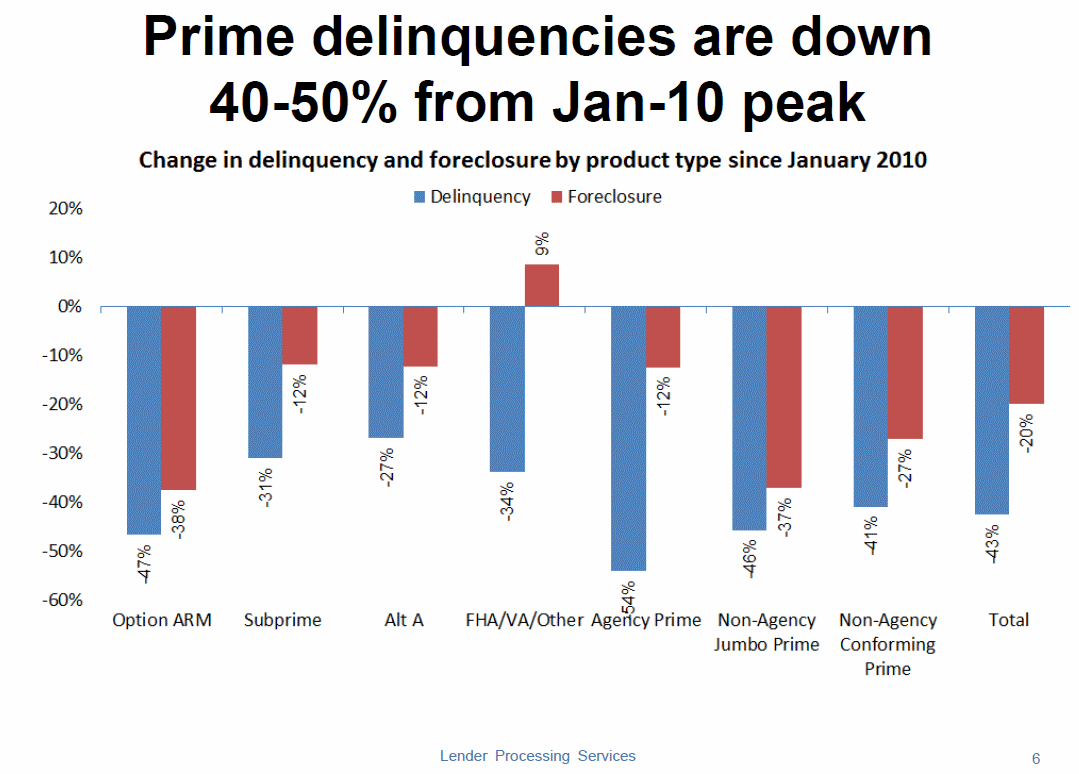
"As we've noted before," Blecher continued, "negative equity appears to still be one of the strongest drivers of new problem loans, and -- primarily buoyed by home price increases nationwide -- that situation also continues to improve. We looked once again at the number of 'underwater' loans in the U.S., and found that the total share of mortgages with LTVs of greater than 100 percent had declined to just 7.3 million loans as of the end of the first quarter of 2013. This accounts for less than 15 percent of all currently active loans and represents a nearly 50 percent year-over-year decline."
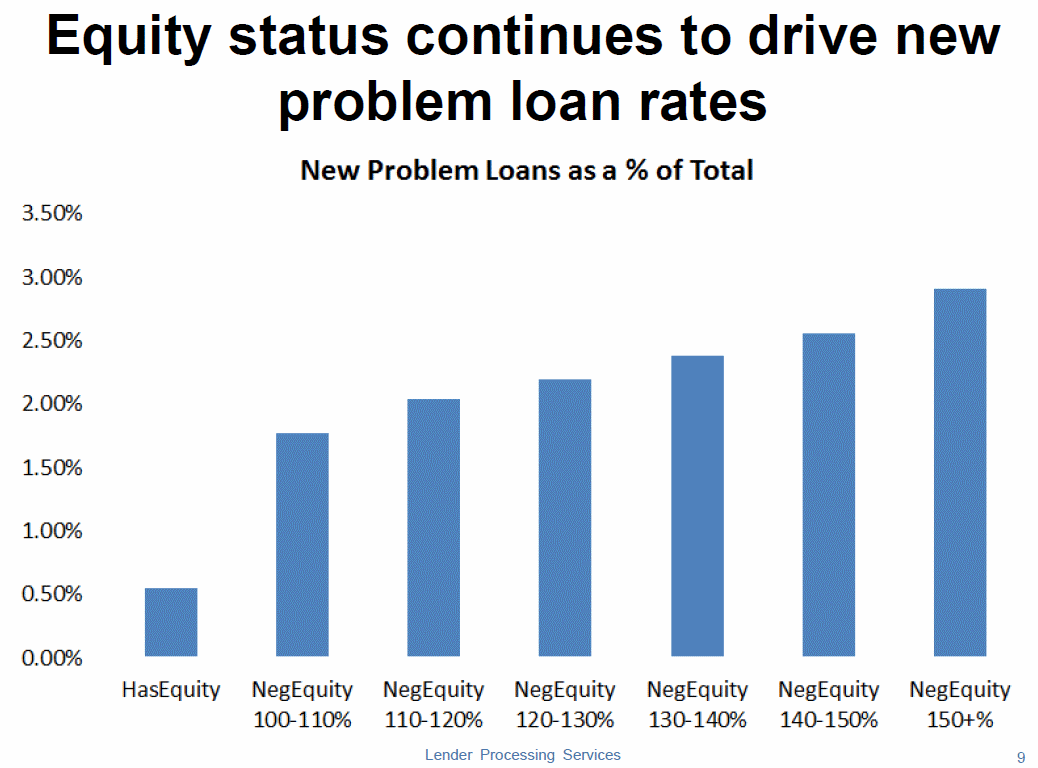
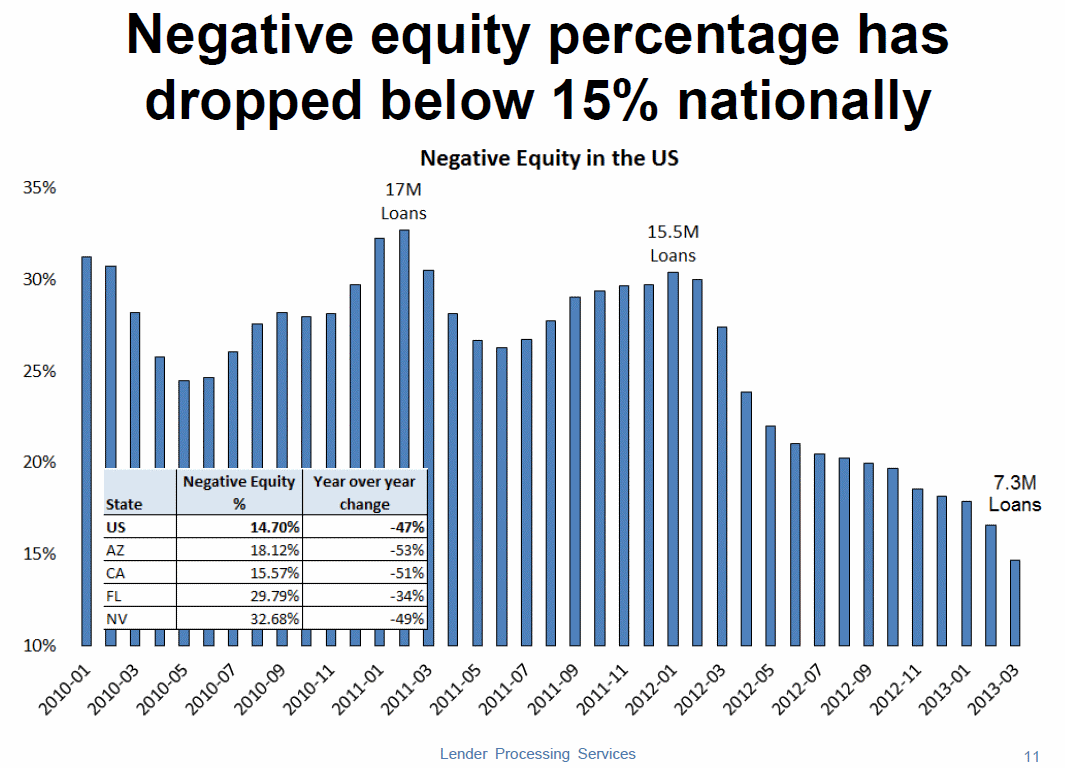
Origination data, provided by LPS through April, did not yet reflect the recent rate volatility but showed that originations remained strong through that month. There were 835,000 new loans, a 1.8 percent increase from March and 34.1 percent growth from April 2012. The May data also showed an increase in prepayment rates, indicating that refinance activity and likely associated originations remained strong despite that month's increased interest rates. LPS said it will continue to monitor the data to see what impact rate increases may have on originations in the months to come.
